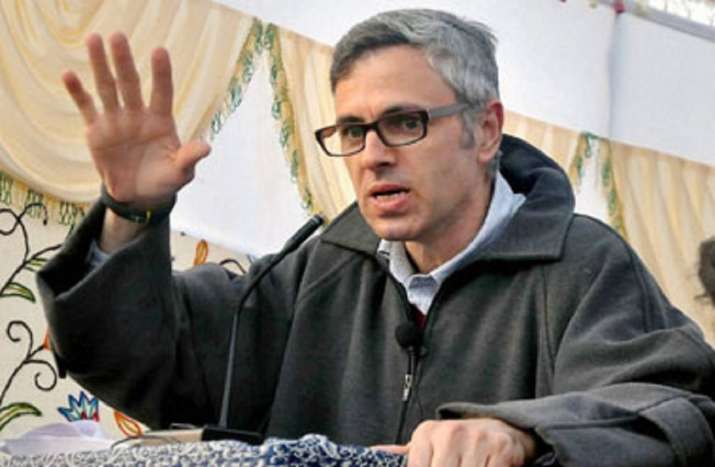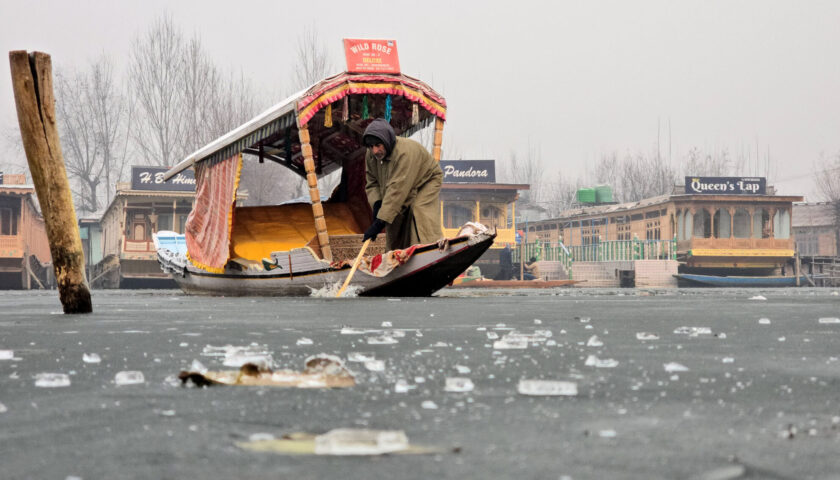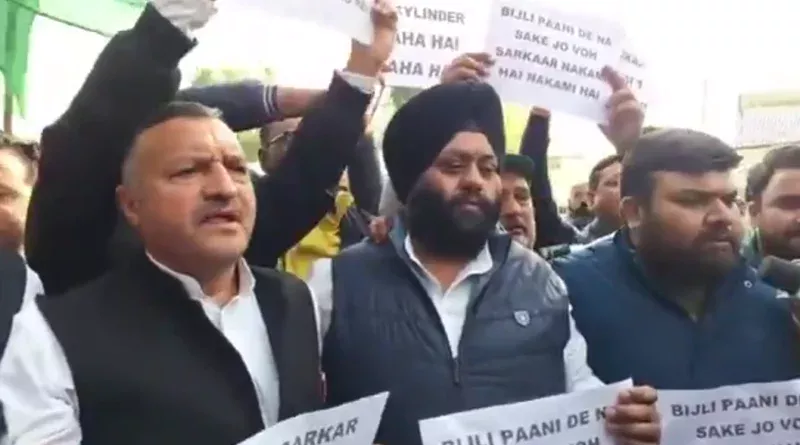Six Years After Silence: Kashmiris Speak on Life, Loss, and Longing for Statehood
By: Javid Amin | Srinagar | 05 Aug 2025
Six years after the dramatic abrogation of Article 370, August 5 remains a date that stirs more questions than answers in Jammu & Kashmir. It’s a date that echoes through tense streets, empty promises, protest slogans, and half-written government files. For many, it’s not just an anniversary—it’s a wound, a symbol, and a political Rorschach test.
As the region marks the sixth anniversary of the constitutional rupture that changed its status, governance, and psyche, fresh waves of political messaging, subdued hope, and hardened memories are unfolding—both on the ground and in Delhi’s corridors of power.
“Nothing will happen tomorrow”: Omar’s Reality Check
On the eve of the anniversary, Chief Minister Omar Abdullah offered a rare moment of clarity in the fog of speculation. “Nothing will happen tomorrow,” he said bluntly on social media, pushing back against the flurry of rumors about a dramatic statehood announcement.
Despite high-level meetings between PM Modi, Home Minister Amit Shah, and President Murmu, Abdullah said he had no insider information and hadn’t met with Delhi officials. His statement was rooted in “gut feeling,” he said, though he remained “cautiously optimistic” that the ongoing Parliament session might yield some breakthrough in the coming weeks.
But for now, his message was clear: temper your expectations.
A Valley on Edge
Security across the Valley has been visibly tightened. Drone surveillance, special checkpoints, and intelligence briefings signal an administration preparing for both symbolic protests and potential unrest.
Police chief R.R. Swain chaired a high-level review to counter what he called “narrative warfare” and disinformation campaigns on social media. Officials insist this is precautionary, but locals describe the atmosphere as “tense déjà vu.”
In downtown Srinagar, shuttered shops and anxious faces speak louder than bulletins. As one resident, Bilal Ahmad, a schoolteacher in Anantnag, told us:
“It feels like we’re holding our breath. Even when nothing happens, the silence is exhausting.”
“A silence that roared”: Remembering August 5, 2019
The memories of that day are etched in the Valley’s collective memory.
On August 5, 2019, Jammu & Kashmir was turned into a fortress. Internet and mobile networks were cut. Politicians were jailed. Hospitals were inaccessible. Patients missed dialysis. Families couldn’t contact each other. Shops ran out of supplies. Entire lives paused.
Dr. Shazia, a gynecologist in Baramulla, recalls:
“I delivered a baby by torchlight that night. The ambulance never arrived. The mother didn’t know if her husband was alive.”
Even six years on, the trauma lingers. Deaths went unreported. Marriages were postponed. Students missed exams. And perhaps most painfully—there was no one to hear the cries.
Speculation, Strategy, and a Stillborn CMP
Back in the present, political uncertainty continues to shadow governance. The NC-Congress alliance that governs the region still lacks a Common Minimum Programme (CMP)—a basic roadmap for shared governance. Congress leader Tariq Hameed Karra has been openly critical of the delay, calling it “a symptom of deeper coordination issues.”
Karra has also launched a 21-day protest campaign titled “Hamari Riyasat, Hamara Haq,” pressing for full statehood restoration.
“We won’t accept a diluted version,” he said. “This is about dignity and constitutional justice.”
Congress has refused to join the government unless full statehood is restored. NC leaders, including Omar Abdullah, insist the alliance is intact but admit to “communication gaps.”
The Congress Campaign: A Black Day and a Hunger Strike
This year, August 5 is being observed as a Black Day by the Congress party. Peaceful sit-ins, hunger strikes, and civil society outreach form the core of the campaign, culminating on August 21, the birth anniversary of Rajiv Gandhi.
The campaign isn’t just a symbolic protest—it’s also an effort to build national momentum during Parliament’s monsoon session.
Land, Livelihood, and Resistance Elsewhere
While Kashmir focuses on political restoration, Punjab’s rural belt is fighting its own battles over autonomy—this time over land.
In Sohian Kalan, villagers have banned government officials from entering, protesting a land pooling scheme that they say threatens their survival.
Sinder Kaur, a 70-year-old farmer, told us:
“If they take our land, how will we eat? Farming is not just work—it’s our identity.”
The local panchayat has passed a resolution rejecting the plan, calling the state’s promise of “voluntary pooling” a myth. This echoes Kashmir’s own complaints—that decisions about people’s futures are being made without them.
The Debt Trap: A Hidden Economic Crisis
Beneath the politics lies a growing economic undercurrent in Kashmir—a debt trap consuming its youth.
After Article 370’s removal, there was a push for entrepreneurship. Loans were easy, business plans shaky, and cultural pressures high.
“People took loans to open cafés or salons without understanding EMIs or compound interest,” says Aadil Wani, a financial literacy volunteer in Srinagar. “Now, they’re borrowing more to repay the first loan.”
The result? Financial stress, broken dreams, and a mental health crisis.
Development or Demographic Shift?
Former CM Mehbooba Mufti has challenged the government’s claim of allocating land to 1.99 lakh “landless” people under PMAY. She questions the data and accuses the administration of importing “poverty and slums” under the guise of development.
The administration denies these allegations, insisting that all beneficiaries are locals, selected via official surveys. But Mehbooba’s broader concern remains:
“Is this about homes, or about changing the face of the Valley?”
August 5: More Than a Date
For the BJP, August 5 is loaded with symbolism:
-
2019: Article 370 abrogated
-
2020: Ram Mandir bhoomipujan
-
2025: Possible rollout of the amended Waqf Act, reshaping property governance and minority representation
But this year, the party has chosen strategic silence. No big events. No speeches. Just a date that speaks for itself.
Is this a pause before policy? Or a calculation to keep tensions simmering, not boiling?
A Region Between Memory and Possibility
Six years on, the people of Jammu & Kashmir still navigate a dual reality—one shaped by past trauma, the other by uncertain hope.
For some, like Hamid Lone, a young law student in Pulwama, “hope is tiring, but giving up is worse.” For others, like Ruksana Jan, a widow in Kupwara, “the state left us. Delhi hasn’t arrived yet.”
As the political class debates files and frameworks, the people continue to ask: Will we get our voice back? Will our silence finally be heard?
Because August 5 is not just a date. It is the pause between promises. The weight of memory. The space where democracy is still looking for a home.




